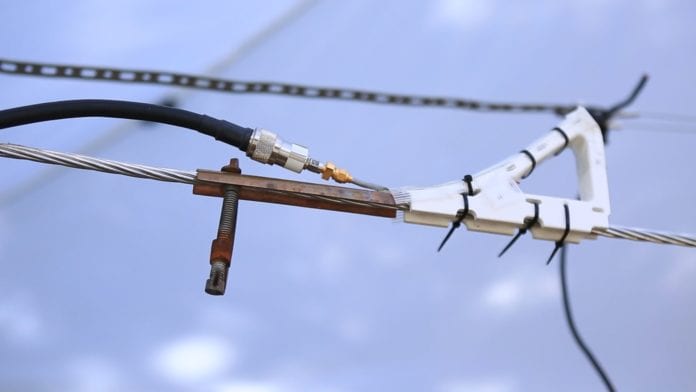AT&T said it is preparing for field trials of a wireless technology that will be easier to deploy than fiber, can run over license-free spectrum and can deliver ultra-fast wireless connectivity to any home or handset. The carrier’s Project AirGig uses power lines to deliver wireless, a technology that has been around for years but has never been commercialized on a broad scale.
“The results we’ve seen from our outdoor labs testing have been encouraging, especially as you think about where we’re heading in a ‘5G’ world,” said John Donovan, the company’s chief strategy officer and group president for technology and operations. “To that end, we’re looking at the right global location to trial this new technology next year.”
AT&T has developed antennas that move millimeter signals along power lines, but not through them. The company said it has more than 100 patents or patent applications supporting this and other related technologies.
Power lines could be the solution for the difficult “last mile” of broadband that operators struggle to deliver economically. Running fiber to homes is expensive, and AT&T sees AirGig as a more affordable solution. The company said it has the potential to deliver multigigabit speeds in urban, rural and underserved parts of the world.
“We believe Project AirGig has the potential to quickly bring connectivity to all parts of the world,” said Donovan. “Our researchers are addressing the challenges that hampered similar approaches a decade ago, such as megabit per second speeds and high deployment costs.”
The Federal Communications Commission adopted rules to allow broadband over power lines back in 2004. At that time many people in the industry expected electric utilities to experiment with broadband over power lines. When it was first approved, speeds were not expected to be significantly faster than those delivered by other, then-existing technologies.
AT&T did not say how close to the power lines its antennas would need to be. Some U.S. cities would probably require the carrier to keep its equipment a minimum distance from power lines.
“In California these antennas would need to be at least eight feet above electrical lines,” said Omar Masry, a professional city planner who has worked for San Francisco. Masry said wind loading would also be a consideration.
AT&T may conduct next year’s field trials outside the U.S., particularly if it faces fewer restrictions in another country. But the carrier is clearly eyeing its biggest market as a promising use case for this emerging technology.
Follow me on Twitter.

